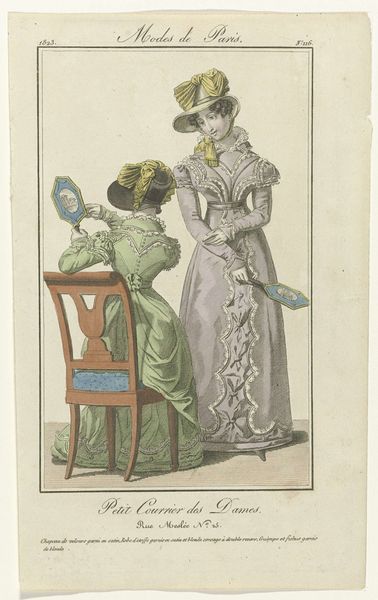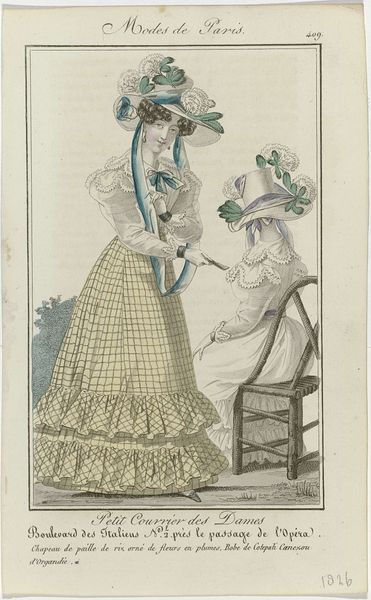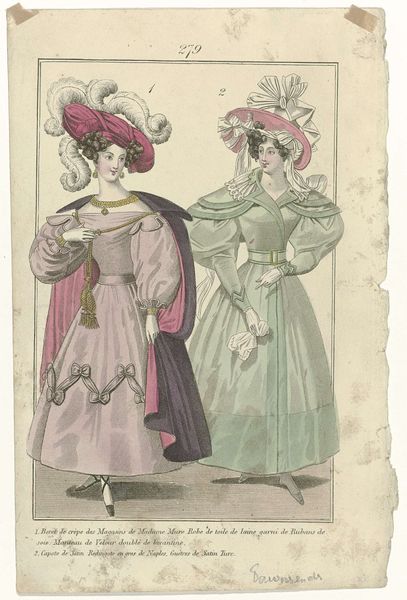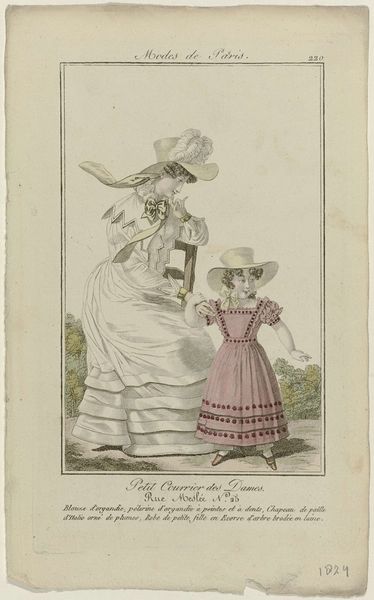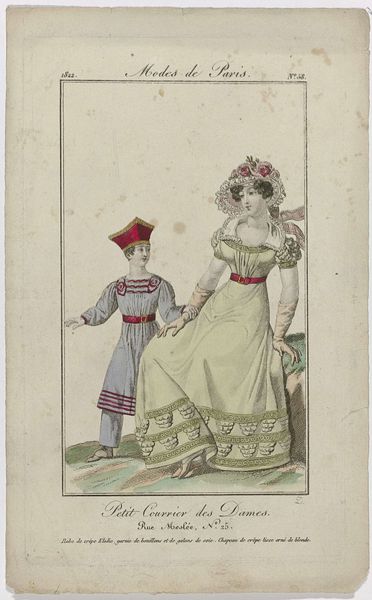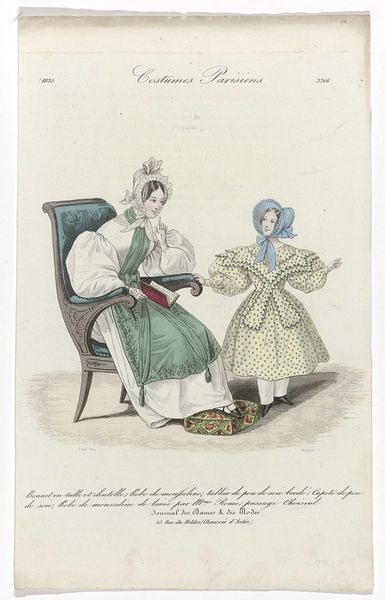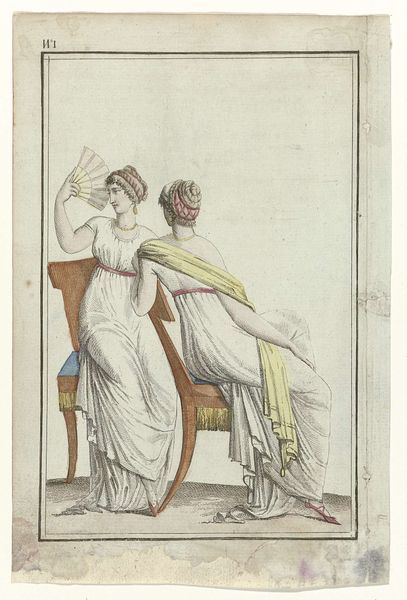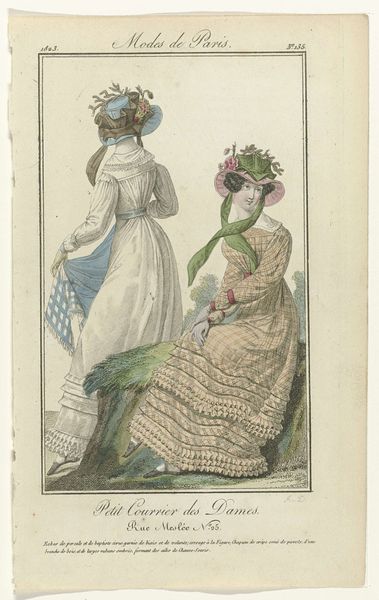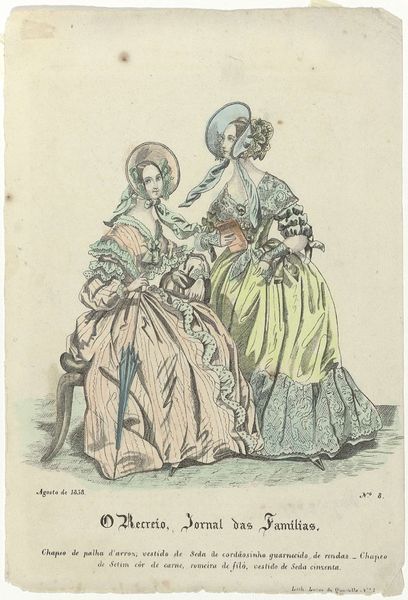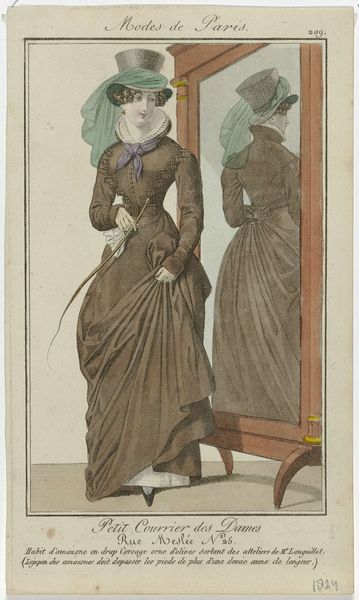
painting, print, watercolor
#
portrait
#
painting
# print
#
caricature
#
figuration
#
watercolor
#
romanticism
#
watercolour illustration
#
genre-painting
#
academic-art
Dimensions: height 103 mm, width 169 mm
Copyright: Rijks Museum: Open Domain
Editor: Here we have an artwork titled "Ladies Monthly Museum, 1803: Wirgman Dress Maker..." from 1803. It appears to be a watercolour illustration, portraying two women. I am struck by its simplicity and how it seems to subtly comment on the fashion and social life of the period. What can you tell me about its cultural context? Curator: This image offers a fascinating window into the consumer culture emerging in early 19th century London. What looks like a simple fashion plate is also advertising. These appeared in publications marketed at women, acting as a direct link between art, fashion, and the rising merchant class. Notice the detail included, not just in the gowns but the accessories? Editor: Absolutely. It is more than just dressmaking. Do you mean it reflects the growing influence of commerce on women's identities and societal roles? Curator: Exactly. These weren't just images; they were subtly shaping desires and defining aspirational lifestyles. Who controls the image? Who consumes the image? And more importantly, how does this commercial image play into existing social hierarchies and gendered expectations of the time? Does that give you a deeper appreciation? Editor: It certainly does. Seeing it as part of the marketing apparatus rather than just a pretty picture shifts my perspective entirely. I thought that this artwork seemed to just simply represent the life of elegant women, but the details reveal it's an invitation to consume that lifestyle. Curator: Precisely. These seemingly innocent fashion plates are a window into the complex interplay of art, commerce, and the social construction of identity. We need to understand the advertisement and its audience to have a fuller appreciation for the time. Editor: That makes perfect sense. Thanks, I am never going to look at these types of paintings in the same light now!
Comments
No comments
Be the first to comment and join the conversation on the ultimate creative platform.
